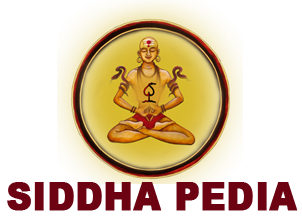Purnabhisheka
The term Poornabhishekh is formed from union of two sanskrit words – Poorna ( sanskrit – पूर्ण ) that means complete or accomplishment and Abhishekh ( sanskrit – अभिषेक ) means the act of pouring holy water over the disciple along with the mantra chanting. Poornabhishekh is an exceptionally rare and sacred event in a sadhak’s spiritual journey. It is a sadhana of high spiritual importance. In Siddha Dharma tantra system and The Shakt Tantra tradition the Poornabhishekh is considered as one of the most sacred and highly auspicious ritual. There is however a huge difference in both these traditions.
In Shakta Tantra system once the disciple accomplishes any of the highest sadhanas of shakt tradition like Mahavidya Sadhana, 64 Yogini Sadhana or Matrika sadhana etc. then he becomes eligible for receiving Poornaabhishekh deeksha. In Shakta tradition when the kula kundalini shakti elevates upto agya chakra and is ready to enter the sahasrahar chakra, at this point the guru gives the purnabhishek deeksha to the desciple. Additionally when the sadhak reaches a state where he experiences oneness with the Tridev (Bramha, Vishnu, Mahesh) or the Tridevi (Saraswati, Mahalakshmi, Mahagauri) he is bestowed upon with Poornabhishekh.
Thereafter some other important ritual practices are given to the disciple. After completing all these rituals the Poornabhishekh sadhana is said to be compete. But in Siddha Dharma tantra tradition the deeksha of Poornabhishekh is bestowed upon a disciple who has completed certain specific highly sacred sadhanas and thus have achieved the eligibility for Poornabhishekh deeksha.
Here when the sadhak enters in the state of oneness with the Brahman, the creator of tridev and Tridevis he recieves the Poornabhishekh. Deeksha means initiation in the path of any sadhana. In poornabhishekh, the deeksha is given to initiate the disciple in this sadhana and once the sadhak completes this sadhana then he gains the eligibility for Brahmābhishekh. After receiving brahmābhishekh the sadhana of Poornabhishekh is said to be complete in true sense.
Contents
- 1
- 2 Origin
- 3 Purnabhishek and Shivatva
- 4 Purnabhishek and different bhava
- 5 Guru-Disciple Tradition of Purnabhisheka
- 6 The twenty three Gurus of Purnabhisheka
- 7
- 8 Purnabhishek Vidhi (procedure)
- 9 Steps of Purnabhisheka
- 9.0.1 1. Invocation of Amogha Agni
- 9.0.2 2. Shankh Pooja
- 9.0.3 3. Kalash Pooja
- 9.0.4 4. Dhwaja (flag) Dharana Paddhati
- 9.0.5 5. Invocation of Mahapurna Siddheshwari
- 9.0.6 6. Mani (vidya) Puja:
- 9.0.7 7. Invocation of Sodashi Devi:
- 9.0.8 8. Mahasankh Pujan:
- 9.0.9 9. Mantra worship:
- 9.0.10 10. Tantric Mukut (crown) ceremony:
- 10 Rationales and the purpose of Purnabhisheka
Origin
According to Siddha Dharma, once Swachhand Bhairava Bhagwan Shiva and Goddess Aghoreshwari Kurukulla were seated atop the cosmic Mount Kailasha. Suddenly, without uttering a word, Bhagwan Shiva rose and began walking towards an unknown destination. Seeing this, Bhagwati Kurukulla, filled with curiosity and devotion, followed him closely
After some time, Swachhand Bhairava entered a mysterious cave. Within that cave was a radiant, golden kalash (sacred urn), shining with divine brilliance. From this kalash, drops of amrit (nectar of immortality) were constantly dripping. Yet, instead of reaching the ground, these drops disappeared midway, vanishing into nothingness. Witnessing this wondrous sight, Bhagwati Kurukulla was astonished. With deep curiosity, she asked Bhagwan Shiva that why do these drops not fall upon the earth. Smiling with compassion, Swachhand Bhairava explained: “These are drops of divine nectar. Beneath this kalash is your own original Shakti form—immortal, imperishable, eternal, beyond sight and comprehension. The nectar is eternally offering you abhishek (divine consecration), for you are the very energy that pervades all existence.” Hearing this profound revelation, to exp[erience her true form Bhagwati Kurukulla entered into a state of deep yogic trance. Immersed in meditation, she beheld herself as pure Urja Punj (a cosmic field of energy)—the eternal Shakti, the supreme power from which the entire universe has manifested. In that divine vision, she realized: there is nothing in existence apart from her; she alone is the source and essence of all creation. The celestial drops of nectar were continuously bathing her, placing her in the highest, most complete state of bein
When Bhagwati Kurukulla returned to Kailasha, she shared this supreme knowledge of Purnabhishek (the complete consecration of the Self) with the Mahasiddhas. In turn, the Mahasiddhas formulated this revelation into the sacred Sadhana of Purnabhishek, which thereafter became an integral part of Siddha Dharm
Purnabhishek and Shivatva
Purnabhisheka is only conferred to a disciple after they have completed deekshas within the first five amnayas (a-e) and have met the secret eligibility required for the next level. To perform sadhanas in the Urdhvamnaya (upper dimensions), Purnabhisheka is essential
Once a disciple receives Purnabhisheka, they solidify their place as an Avadhuta, as outlined in the Mahanirvna Tantra. The disciple then embarks on the path to becoming an Avadhuta (one who is spiritually liberated), or Shiv
In Siddha Dharma, the journey of human consciousness is seen as a progression through three stage
1. Pashutva(the state of being a mere animal, bound by external bond
2. Devatva(the state of divine consciousnes
3. Shivatva (the ultimate state of becoming one with Shiv
At birth, humans are in the state of Pashutva, bound by both internal and external pashas (bondages). External pashas are purified through external rituals, while internal pashas are purified through inward-focused practices. The first six amnayas focus on purifying external bondage
Once the external pashas are subdued, the practitioner moves on to address internal bondages. This process requires a shift in awareness, similar to the state of *Pratyahara* in Ashtanga Yoga, where the focus moves inward. After overcoming these internal pashas, the practitioner attains Shivatva, or, in yogic terms, enters a state of Samadhi or “Aham Brahmasmi” (the realization that “I am Brahman,” the nondual, eternal consciousness
Purnabhishek and different bhava
In Siddha Dharma, sadhanas are performed with different bhavas or mental states. These bhavas represent various stages of spiritual progress
1. Pashubha
The journey of tantra begins with Pashubhava, where the practitioner sees themselves as separate from the deity they worship. At this stage, they are considered “Pashus” (bound beings), focused on external senses and not yet ready to transcend the material worl
2. Veerabha
Once the foundation for overcoming external bondages is set, the practitioner enters Veerabhava. Here, they see themselves as one with the deity they worship. The practice of Veerachara involves performing sadhanas with the belief that the practitioner and the deity are united, aiming for tantric Samadhi (oneness with the deity
3. Divyabha
After gaining prominence in their deekshas and reaching a high level of consciousness, the practitioner receives Purnabhisheka. In Divyabhava, the practitioner transcends the duality between worshipper and worshipped. There is no longer a distinction; they perform sadhanas as if they are the deity themselves. At this stage, the disciple becomes an Avadhuta and embodies the essence of Shiv
Guru-Disciple Tradition of Purnabhisheka
In Siddha Dharma, the tradition of Purnabhisheka has been passed down unbroken, starting from Swachchhand Bhairav Shiva himself. The first Purnabhisheka in this creation was performed by Swachchhand Bhairav Shiva on Bhagwati Kurukulla. Out of compassion, Bhagwati Kurukulla then anointed the Siddha Peethadhishwaras of Kaulantak Peeth to perform Purnabhisheka for future Siddhas, ensuring the continuation of the sacred lineages
The twenty three Gurus of Purnabhisheka
| SL No. | Image | Name of the Mahasiddhas (English) | Name of the Mahasiddhas (Hindi) | |
|---|---|---|---|---|
| 1 | 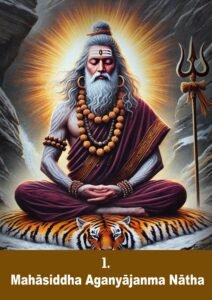 | Mahāsiddha Aganyajanma Nātha | महासिद्ध अगण्यजन्म नाथ | |
| 2 |  | Mahāsiddha Dharmalohita Nātha | महासिद्ध धर्मलोहित नाथ | |
| 3 |  | Mahāsiddha Vamakharpari Nātha | महासिद्ध वामखर्परी नाथ | |
| 4 |  | Mahāsiddha Vajraheeraka Nātha | महासिद्ध वज्रहीरक नाथ | |
| 5 | 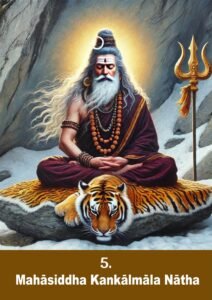 | Mahāsiddha Kankaalmaala Nātha | महासिद्ध कंकालमाल नाथ | |
| 6 |  | Mahāsiddha Vivswana Nātha | महासिद्ध विवस्वान नाथ | |
| 7 | 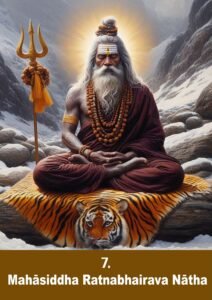 | Mahāsiddha Ratnabhairava Nātha | महासिद्ध रत्नभैरव नाथ | |
| 8 |  | Mahāsiddha Mashanmushthi Nātha | महासिद्ध मशानमुष्ठि नाथ | |
| 9 |  | Mahāsiddha Atichhatra Nātha | महासिद्ध अतिछत्र नाथ | |
| 10 | 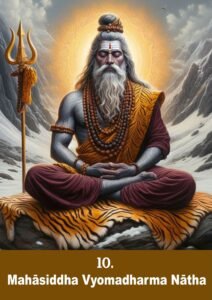 | Mahāsiddha Vyomadharma Nātha | महासिद्ध व्योमधर्म नाथ | |
| 11 | 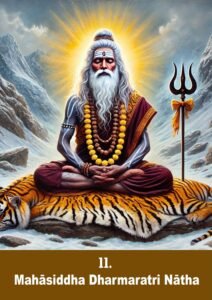 | Mahāsiddha Dharmaratri Nātha | महासिद्ध धर्मरात्रि नाथ | |
| 12 | 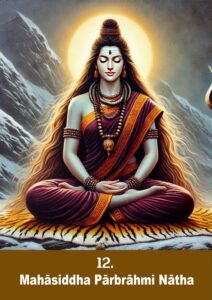 | Mahāsiddha Paarbrahmi Nātha | महासिद्धा पारब्रह्मी नाथ | |
| 13 | 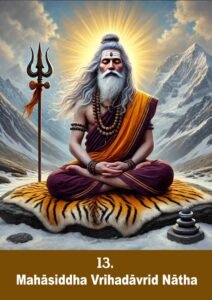 | Mahāsiddha Vrihadavrid Nātha | महासिद्ध वृहदावृद नाथ | |
| 14 | 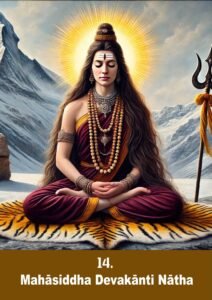 | Mahāsiddha Devakanti Nātha | महासिद्धा देवकांति नाथ | |
| 15 | 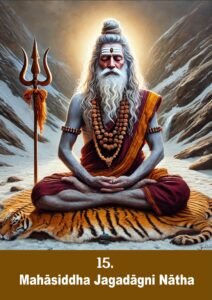 | Mahāsiddha Jagadaagni Nātha | महासिद्ध जगदाग्नि नाथ | |
| 16 |  | Mahāsiddha Atikrishna Nātha | महासिद्ध अतिकृष्ण नाथ | |
| 17 |  | Mahāsiddha Mahiraksha Nātha | महासिद्ध महिरक्ष नाथ | |
| 18 | 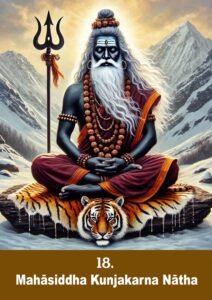 | Mahāsiddha Kunjakarna Nātha | महासिद्ध कुञ्जकर्ण नाथ | |
| 19 | 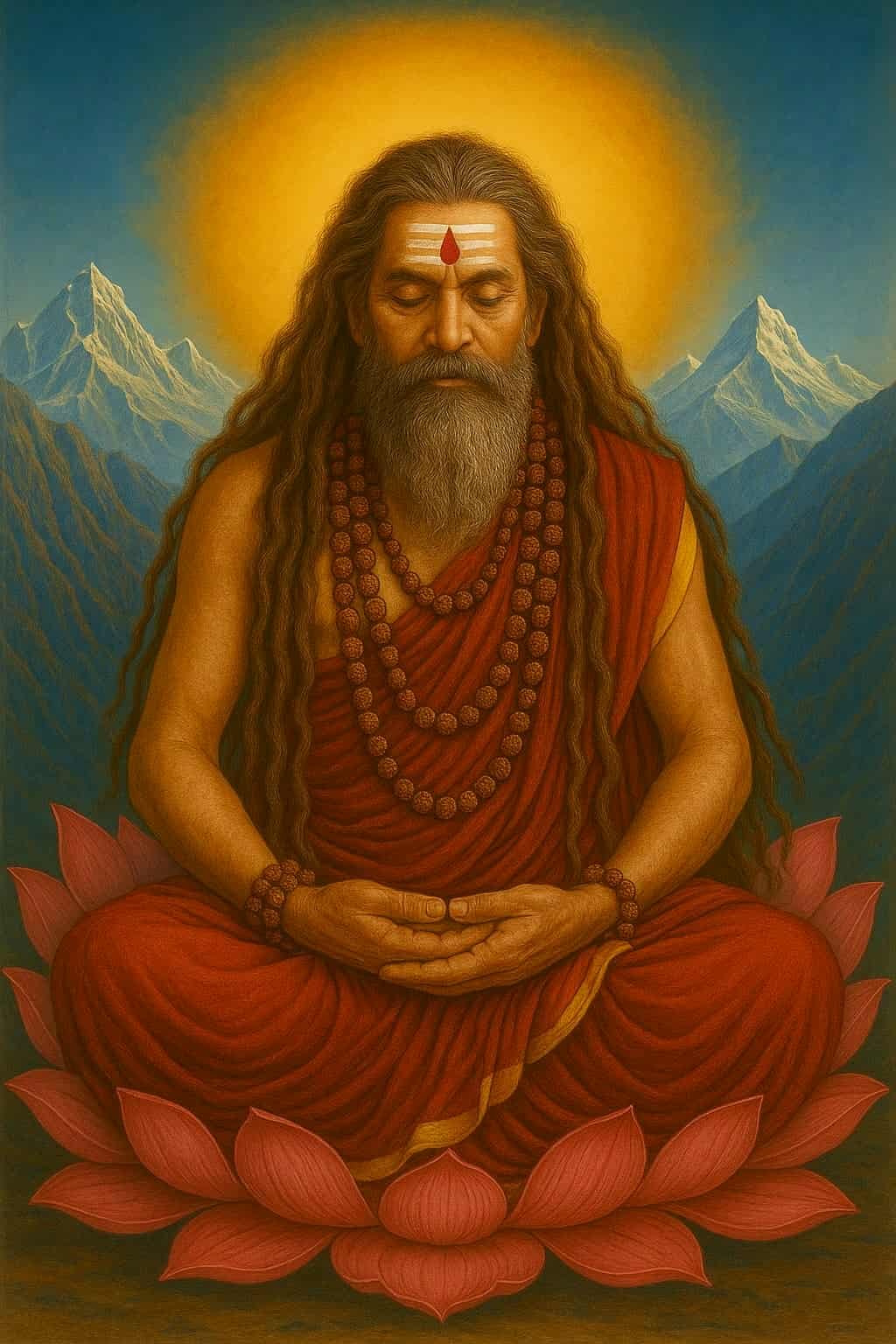 | Mahāsiddha Pañcadrākṣa Nātha | महासिद्ध पञ्चद्राक्ष नाथ | |
| 20 | 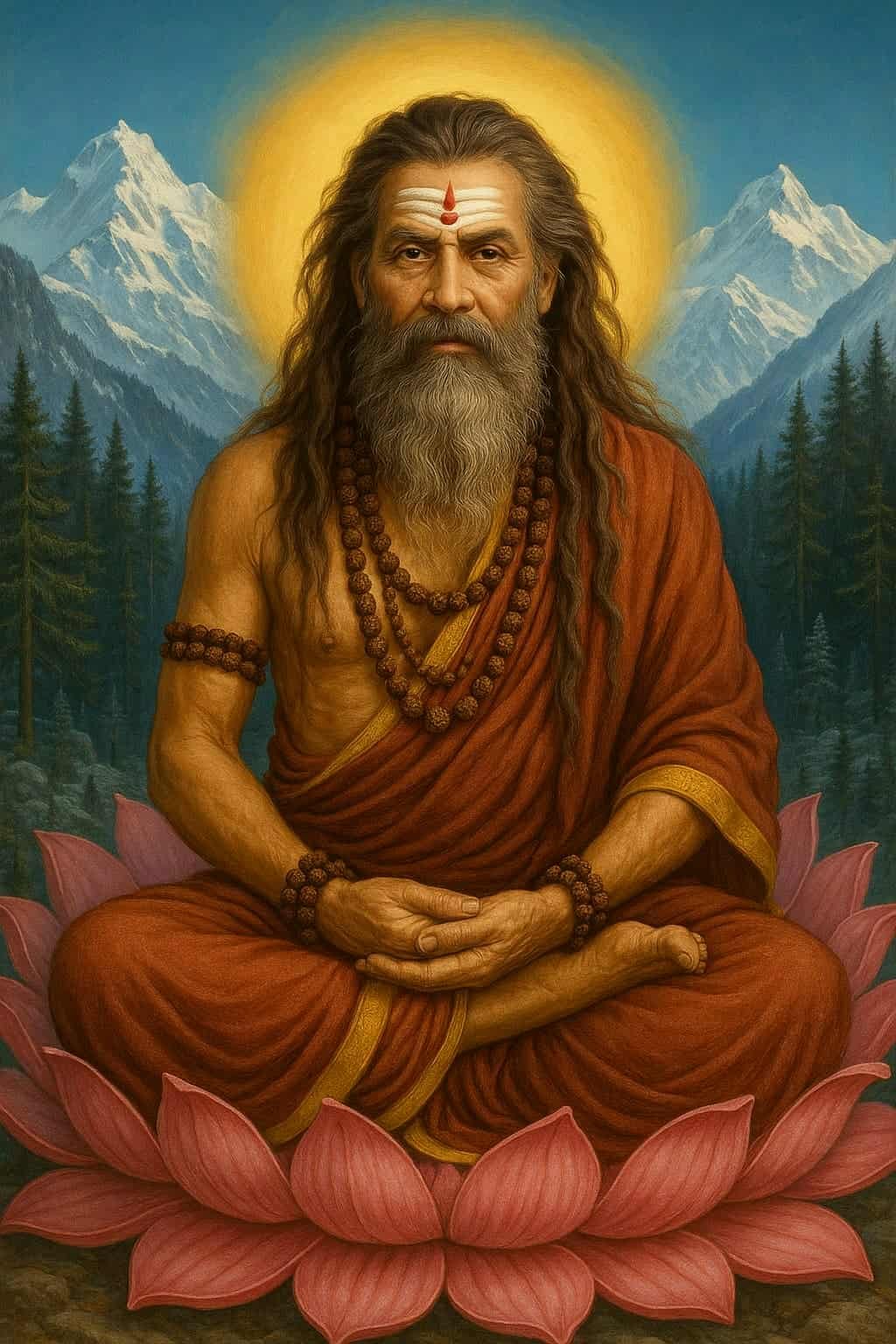 | Mahāsiddha Rudrāmaṇa Nātha | महासिद्ध रुद्रामण नाथ | |
| 21 | 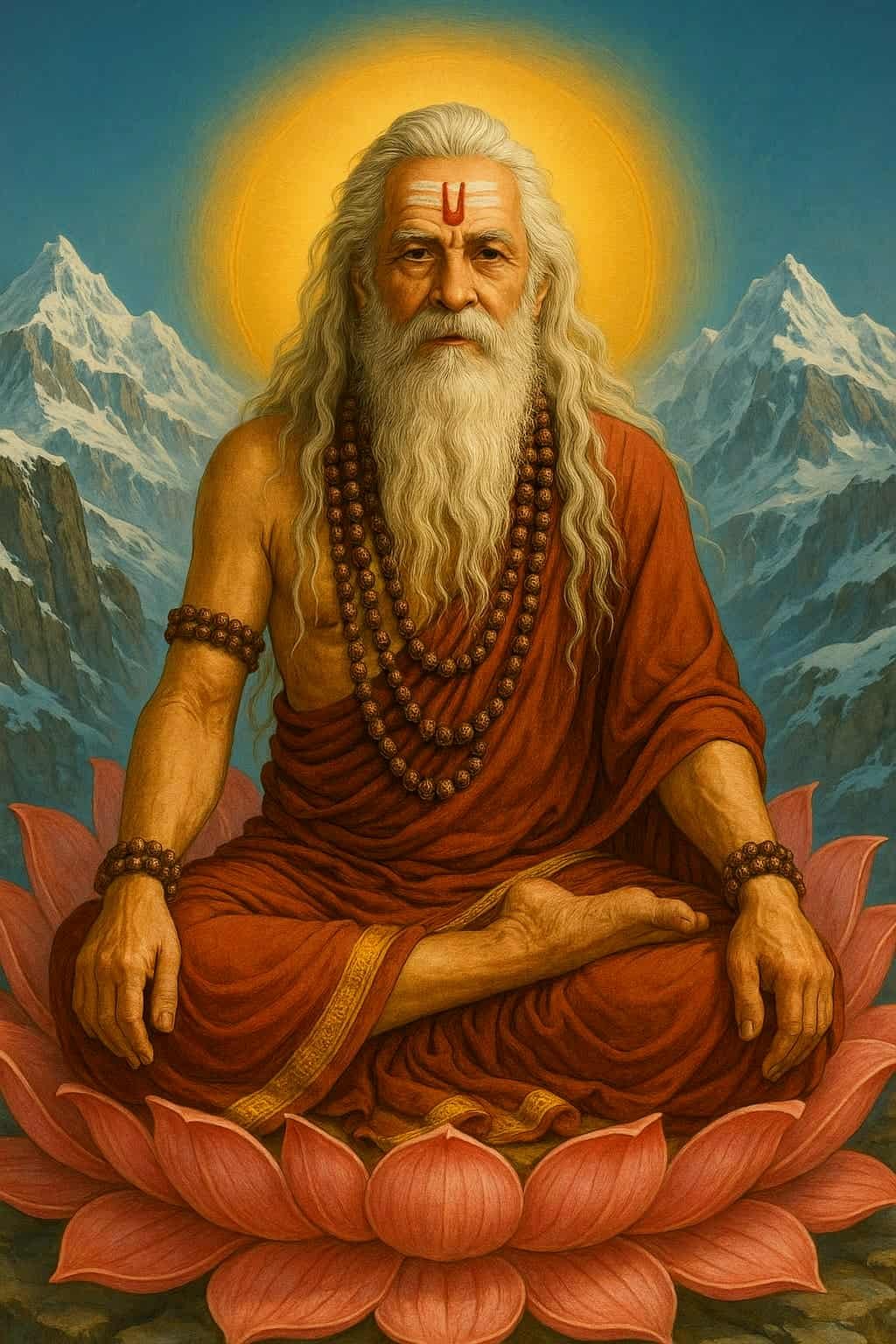 | Mahāsiddha Suketa Nātha | महासिद्ध सुकेत नाथ | |
| 22 | 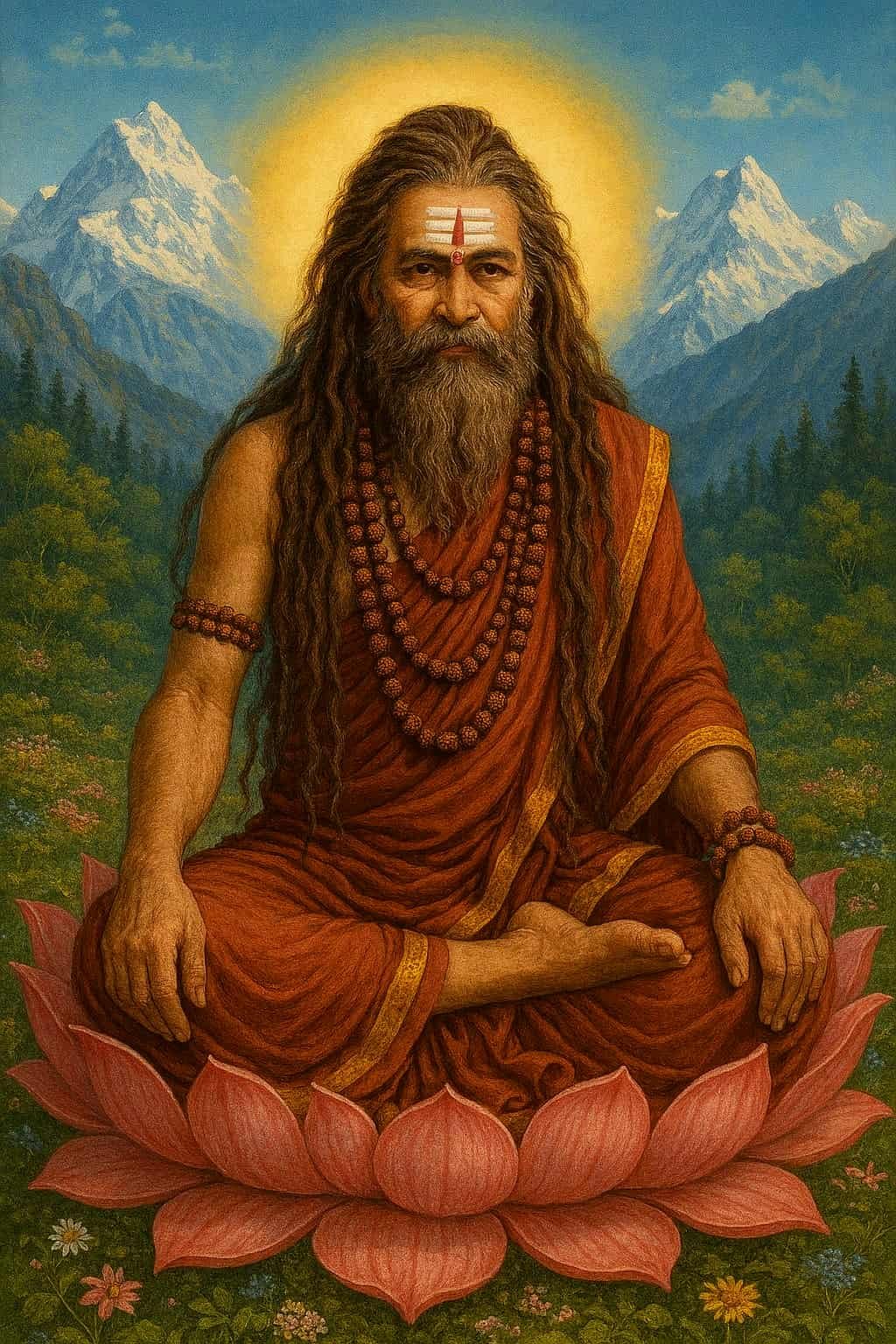 | Mahāsiddha Mūlavaṭa Nātha | महासिद्ध मूलवट नाथ | |
| 23 | 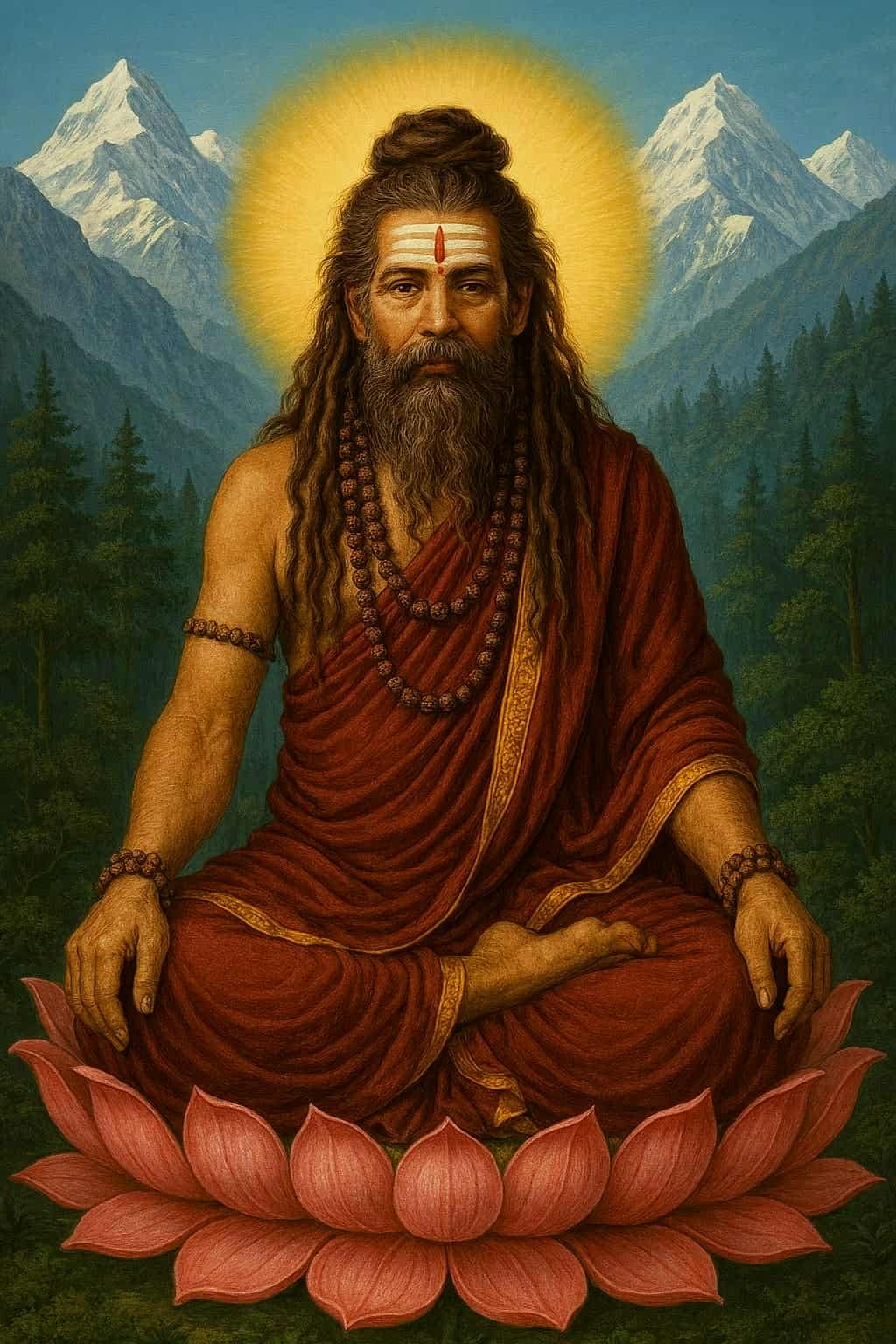 | Mahāsiddha Suketa Nātha | महासिद्ध मांत्रिक नाथ |
Purnabhishek Vidhi (procedure)
The Pūrṇābhiṣeka of Siddha Dharma differs from that of Mahanirvāṇa Tantra or Śāktisaṅgama Tantra because Siddha Dharma has its own kula (Yoginī Siddha Kula), its own guru-maṇḍala, and its own vidhis. While tantric texts prescribe universal procedures, Siddha Dharma maintains a Himalayan, lineage-specific mode of consecration where the focus is not on ritual formulae but on direct siddha-transmission
According to Siddha Dharma, there are twenty-three Gurus (Mahasiddhas) of Purnabhisheka, and they must first be invoked and worshipped before the sacred rite of Purnabhisheka can be performed. After their invocation, the worship and invocation of Bhagwati Yogmaya is carried out, together with her two distinct forms, Mahalakshmi and Mahasaraswat
Bhagwati Yogmaya is the principal presiding deity of Purnabhishek Sadhana. She is visualized as seated upon a lotus flower throne, adorned in red garments and a royal crown. In her hands, she holds a lotus flower and a sword, symbolizing purity and divine power. To her left stands Goddess Mahalakshmi, and to her right, Goddess Mahasaraswat
The sadhak (spiritual practitioner) must meditate upon and visualize this divine form of Yogmaya, accompanied by Mahalakshmi and Mahasaraswati, in order to receive the blessings of the Goddess and become worthy of Purnabhisheka. Similarly, the Siddha Guru who bestows Purnabhishek upon a disciple is also required to worship and invoke these goddesses prior to initiating the sacred rit
Kula Pooja of Bhagwati Yogmaya is also performed before recieving the Purnabhishek. In kula pooja the Sared juice of raisin or dry grapes, honey or ginger is offered. Dry fruits are offered to Bhagwati. In Purnabhishek sadhana Bhagwati is worshiped in her Kumari form. Therefore in this sadhsana we perform the worship of a Kumari considered as the divine embodiment of the Goddess herself
But in deshaj Parampara (tradition) Goddess Yogmaya is worshiped in many other forms as Goddess Kurukulla, Goddess Dakini or any other form of Goddess and there worship also differs according to different regions and traditions of himalaya
Since Bhagawati Kurukulla is the personal and the lineage deity of Siddha Dharma, Bhagawati Yogmaya and her two distinct forms are invoked in the form of Kurukulla, Sukulla and Vikulla. The rajasic form of Kurukulla is then invoked along with her two Gana Mandala, the right hand side comprising of Devagana Mandala and the left hand side of Apsaragana Manadala. This is the Mahamandala of Purnabhishek where Bhagwati Yogmaya is in the cente
Steps of Purnabhisheka
There are three essential guhya (secret) steps shall not be mentioned in this section so as to honor the secrecy of the Siddha Dharma. Those steps are only known to the Mahasiddha Gurus of Siddha Dharma lineage. The rest of the steps are as follows
1. Invocation of Amogha Agni
The Mahasiddha Guru, or in this age His Holiness Mahasiddha Ishaputra, invokes the Amogha Agni in a round, divine vessel known as the Mahāgni Patra. This sacred fire is established both for ritual purposes and for the performance of havana. For lighting the Amogha Agni, a large bowl-shaped vessel is used, placed at a specific height above the ground. The fire is kindled using the woods of select sacred trees, along with dhrit (ghee) of the indigenous cows of himalayan regions and camphor, which serve as its pure and sanctified fuel
2. Shankh Pooja
As per Siddha Dharma, for the performance of Purnabhisheka, two Mahashankh patra is essential because the Purnabhisheka is performed through two distinct ways. The Purnabhisheka inception point is different for Bhairava and Bhairavis but the final abhisheka is the same for both. The two inception points are
For Bhairav – The Siddha Dharma performs “Nara Moola Purnabhisheka Paddhati” . The Devata for this procedure is Bhagwān Surya and the nādi is Idā nādi
For Bhairavis – The Siddha Dharma performs “Stri Moola Purnabhisheka Paddhati”. The Devata for this procedure is Chandradev and the nādi is Pingalā Nādi.
On the undersurface of the sacred shankhas symbols are engraved with gold. On one shankh, the symbol of the Surya Nadi is inscribed, while on the other is the symbol of the Chandra Nadi. The shankh bearing the Surya symbol is filled with water mixed with certain ingredients that give it a bitter taste, such as neem leaves and other herbs. The shankh marked with the Chandra symbol is filled with water mixed with honey and other sweet elements, making its taste pleasant. Since males are by nature more aggressive, the Surya Nadi is considered more dominant in their constitution. Therefore, their abhishek (ritual consecration) is first performed with the Surya shankh, then with the Chandra shankh, and finally with both shankhas together. In the case of females, the abhishek is done in the reverse sequence: first with the Chandra shankh, then with the Surya shankh, and lastly with both shankhas together
3. Kalash Pooja
A Kalash is placed after collecting water from various sacred rivers of the Himalayas. Different metals, such as gold and silver, are placed inside it. Precious stones like diamond, ruby, sapphire, and emerald are also added to the water. After this, the Pooja of the Kalash is performed and the beej mantra ‘Shreem’ (श्रीं ) is written on it. Then this sacred water is used for the Purnabhishek.
4. Dhwaja (flag) Dharana Paddhati
The Bhairava/Bhairavis should also bear flags with three beej mantras, (kleem, hreem and shreem) inscribed on it. The flag bearing denotes the mastery over three modes of nature, satwa, rajas and tamas. For this purpose, flags are prepared using five different colored cloths. On each cloth, these three beeja mantras are written. Thereafter, all the individual cloths are joined together to form a single unified flag. Each piece of cloth undergoes a separate prāṇa-pratiṣṭhā (ritual invocation of divine presence), after which the entire flag is worshipped as a whole. The flag is then erected upon a mound of grains, symbolizing prosperity and sustenance. Following the worship, it is ceremonially taken in hand, carried with reverence, and finally installed in its designated plac
This entire sacred process is known as the Dhwaj Dhāraṇa Paddhati (the tradition of consecrating and bearing the flag)
Completing this sacred process signifies that the sādhaka has attained mastery over the five elements (Pancha Tattvas).
5. Invocation of Mahapurna Siddheshwari
The Siddha Dharma then prescribes the invocation of the Mahapurna Siddheshwari form of Kurukulla to perform Purnabhisheka because it is believed that she bestows purnata or completion to the Siddhas. She is depicted as a golden color goddess with four hands seated on the red coloured lotus asana in padmasana. Her two front hands hold the mani/ratna(jewels) in pranam mudra which imply holistic wisdom of the Siddhas. In the left hand she holds red lotus which also signifies the total accomplishment in rajasic tantras and in her right hand she holds the pushbāna (flower bow and arrow) signifying that she is manifestation of Bhagawati Kurukulla herself with her magnetic and subduing virtues. Furthermore, she wears a crown with a big ratna jewel inscribed on it which signifies the accomplishment of all the tantra vidhya because the real jewel in tantra is vidhya and not physical jewel.
6. Mani (vidya) Puja:
The Pūrṇābhiṣeka process is subsequently followed by Maṇi Pūjā, or the worship of Vidyās. This is because Pūrṇābhiṣeka essentially signifies the perfection and culmination of those Vidyās as attained and transmitted by the Siddhas. For a Siddha, Vidyās are the highest form of wealth—unique and imperishable treasures that alone accompany the Siddha beyond death. Unlike material possessions, which are left behind, Vidyās transcend mortality. For this reason, the Vidyās are revered as Ratnas (gems), symbolizing their indestructible nature and supreme value.
7. Invocation of Sodashi Devi:
The Shodash dal Devi is then invoked and worshipped in the form of shodash nitya of Bhagawati Mahapurna Siddheshawari and then various mandalas are invoked so that they provide protection and blessing to the Siddha undertaking Purnabhisheka. The various mandala invoked are as follows:
Deva Mandala
Garuda Mandala
Naga Mandala
Kinnar Mandala
Yaksha Mandala
Gandharva Mandala
Apsara Mandala
Gurumandal
Ratna Mandala
Dakini Mandala
Kritya Mandala
Kirat Mandala
Vyāla Mandala
Gana Mandala
Bhairav Mandala
Guhyaka Mandala
8. Mahasankh Pujan:
In the Purnabhishek Sadhana, 108 Mahashankhas are required, signifying the completion of the spiritual process. The number 108 holds profound significance, for it is said that Bhagwati Kurukulla had to take 108 births before attaining pūrṇatā (spiritual completion). After receiving the supreme knowledge of the highest tantras, the immense energy of this realization became so overwhelming that the head of Bhagwati is said to have burst 108 times. Each bursting was a symbol of transcendence, as the human form could not contain the limitless force of this divine wisdom and sādhana.
As an eternal reminder of this supreme truth, Bhagwan Shiva adorns Himself with a garland of 108 skulls of Bhagwati, where each munda represents the essence of one of the supreme tantras. Thus, the 108 skulls are not mere symbols of destruction but embodiments of the highest wisdom and realization.
For this reason, in Purnabhishek Sadhana and many other tantric practices, the ritual of Munda Pūjā is performed. The munda may be represented symbolically—crafted from metal, made from shells (kaudīs), or even made using coconut shells. Each form is honored as a sacred vessel of the supreme knowledge of tantra.
9. Mantra worship:
The Siddha Guru then performs the mantra worship and performs the Purnabhisheka to the Siddhas with two main mantras which are for Nara Moola Purnabhisheka and Stri Moola Purnabhisheka Paddhati respectively. Each paddhati (method) comprises of 42 mantras. These are present in the set of 2 so in total 21 sets of mantras are present. After performing the Purnabhishek the sadhakas are given 21 sacred mantras of this sadhana. These mantras have to be chanted in a specific number that has to be completed within a period of 9 months. This mantra chanting has great significance as the Guru has performed the abhishek but the revelation of the power of this sadhana can only be done when the sadhak has completed the manatra chanting within this set period of time. These mantras are considered to be very aggressive in nature. Therefore before chanting these mantras the worship of protector deities like Banashira devta, Khari devta or the kulant nath and gurumandal is performed so that the negative energies (tamasik forces) do not harm the sadhak.
10. Tantric Mukut (crown) ceremony:
After the Purnabhisheka, the Siddhas are given Mukut (crown) by the Siddha Guru to adorn in the head signifying purnata (completion). The Siddhas are also given bhasma(sacred ashes) which they have to smear it in their heads to form tripunda. The Siddhas are also bestowed with a danda(scepter) signifying authority over various vidyas. The Sadhaks also have to decorate themselves with the garland of jewels signifying mastery over vidyas and they also have to hold a khatvanga or trishul as the sign of Siddha Dharma lineage.
Rationales and the purpose of Purnabhisheka
As per Siddha Dharma, the aim and the purpose of Purnabhisheka is to become one with Ananda Bhairava/Bhairavi form. The Siddhas after Purnabhisheka walks in the path of becoming an Avadhuta, free from all forms on inflictions and establishes themselves in Ananda (bliss). The Siddhas then live a life of Kaulottama jeeva or the perfect lives of the Kaulas.
Furthemore, it is also believed that the Siddhas have now paved their first step to talk and preach about tantras publicly but they are only bestowed with the final permission when they can prove their eligibility to His Honliness Mahasiddha Ishaputra that they have understood and mastered the 108 tantras.
